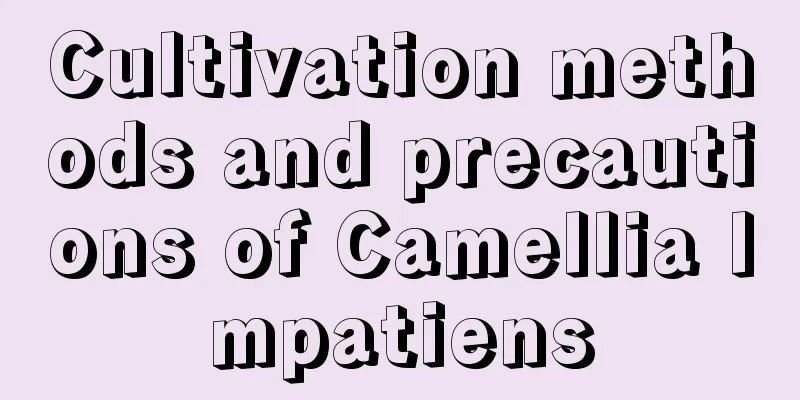Cultivation methods and precautions of Camellia Impatiens

Cultivation method of Camellia ImpatiensLight and temperatureCamellia Impatiens has strong adaptability. To cultivate Camellia Impatiens, it is necessary to provide suitable light and temperature conditions. The suitable growth temperature for Camellia Balsam is between 15℃ and 25℃. It is not resistant to high temperature. When the temperature is too high, the growth of the plant will be affected. In severe cases, it may stop growing. During the high temperatures in summer, the growing environment needs to be kept cool, with appropriate shade provided, and strong direct sunlight should be avoided. However, care should be taken not to provide excessive shade. If there is insufficient light, the Camellia Balsam plant may grow too tall and the leaf color may become lighter. Pay attention to keep warm in winter, because Camellia Balsam is not cold-resistant, and maintain sufficient light. Watering and fertilizingWhen growing Camellia Balsam, water and fertilizer are of paramount importance. There must be sufficient water to keep the soil in the pot moist, but avoid waterlogging, otherwise the roots will rot. During the maintenance process, watering must be appropriate and the air humidity must be maintained at a certain level. In summer, it is necessary to water the plant in time and spray water on the ground and leaves to maintain air humidity. In order to ensure that the Camellia Balsam has sufficient nutrients, you can apply dilute fertilizer water every 10 days. In the early stages of growth, you can apply more nitrogen fertilizer, but before flowering, you should control the use of nitrogen fertilizer. Things to note when growing Camellia ImpatiensReproduction methodCamellia Impatiens can be propagated by cuttings, which can be done all year round. It is generally easy to root and can be cut into water in summer. Pests and diseasesThere are many diseases in the cultivation process of Camellia Balsam, including damping-off disease, powdery mildew, white rot and mosaic disease, all of which have adverse effects on the growth of Camellia Balsam to varying degrees. When it is discovered that Camellia Balsam is diseased and growing poorly, preventive measures can be taken in a timely manner. BasinWhen growing Camellia Balsam, you need to choose sandy soil with good drainage and fertility when potting it. The camellia balsamina seedlings need to be potted when they grow to a certain size. |
<<: Cultivation methods and precautions of Jade Leaf Golden Flower
>>: Cultivation methods and precautions of shell flowers
Recommend
The best time to prune your jade tree
1. Pruning time There is no fixed time for prunin...
Cultivation methods and precautions of lotus magnolia
1. Maintenance methods 1. Flower pot: Lotus magno...
Plum growing conditions and temperatures are suitable for the climate of the growing area
Introduction to Prunes Prune is also known as Cal...
How to plant potted mulberries
Planting time It is generally planted in winter a...
What are the cultivation methods and precautions of Boston fern?
Boston fern cultivation method Boston fern belong...
When do peonies bloom in Beijing?
1. When to open Peony is one of the flowers that ...
Cutting propagation of Sedum rotundifolia
Prepare This method of propagation allows the pla...
Does nasturtium prefer shade or sun?
Does nasturtium prefer shade or sun? Nasturtium i...
When is the best time to transplant chrysanthemums?
When transplanting chrysanthemums, pay attention ...
What is the crop of Yumai?
What kind of crop is Yumai? Yumai refers to oats,...
The flower language and plant culture of the tassel tree
Flower Language Feminism. Plant Culture According...
Symptoms and treatment methods of orchids not adapting to the pot
1. Performance 1. Leaves: The leaves are wilted a...
How to make succulent leaves take root and sprout quickly (how to make succulent petals fall off and take root)
Succulent leaves taking root The biggest worry wh...
How to cultivate Camellia miniata
1. Breeding methods 1. Flower soil: Camellia is a...
How and when to plant snowflake lotus
Snowflakes is a perennial herb of the Amaryllis f...









